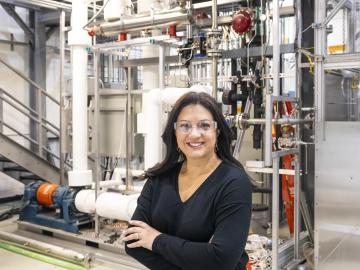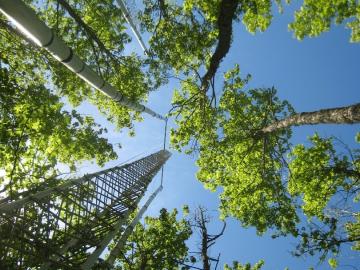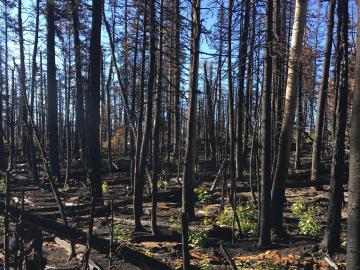
Filter News
Area of Research
News Type
News Topics
- (-) Advanced Reactors (2)
- (-) Artificial Intelligence (6)
- (-) Environment (38)
- (-) Frontier (1)
- (-) Nanotechnology (9)
- (-) Nuclear Energy (9)
- (-) Security (5)
- 3-D Printing/Advanced Manufacturing (19)
- Big Data (5)
- Bioenergy (13)
- Biology (21)
- Biomedical (10)
- Biotechnology (4)
- Buildings (6)
- Chemical Sciences (3)
- Clean Water (9)
- Composites (5)
- Computer Science (31)
- Coronavirus (5)
- Critical Materials (3)
- Cybersecurity (5)
- Energy Storage (13)
- Exascale Computing (3)
- Fusion (6)
- Grid (9)
- High-Performance Computing (14)
- Isotopes (12)
- ITER (3)
- Materials (21)
- Materials Science (20)
- Mathematics (1)
- Mercury (4)
- Microscopy (9)
- Molten Salt (4)
- National Security (4)
- Neutron Science (18)
- Physics (5)
- Polymers (6)
- Quantum Computing (2)
- Quantum Science (7)
- Space Exploration (6)
- Statistics (1)
- Summit (4)
- Transportation (21)
Media Contacts

Toward the goal of bringing the next generation of nuclear power reactor technology online this decade, ORNL and Analysis and Measurement Services Corporation have successfully completed loop testing of instrument and control sensors for an advanced reactor design for small modular reactors.

Rich Giannone uses bioanalytical mass spectrometry to examine proteins, the primary driver in biological systems.

The Accelerating Therapeutics for Opportunities in Medicine , or ATOM, consortium today announced the U.S. Department of Energy’s Oak Ridge, Argonne and Brookhaven national laboratories are joining the consortium to further develop ATOM’s artificial intelligence, or AI-driven, drug discovery platform.

Oak Ridge National Laboratory was among an international team, led by Lawrence Livermore National Laboratory, who synthesized 108 elevated carbon dioxide, or CO2, experiments performed in various ecosystems to find out how much carbon is

New data distributed through NASA’s Oak Ridge National Laboratory Distributed Active Archive Center, or ORNL DAAC, provide an unprecedented picture of plants’ carbon storage capacity around the globe.

Researchers at Oak Ridge National Laboratory have identified a statistical relationship between the growth of cities and the spread of paved surfaces like roads and sidewalks. These impervious surfaces impede the flow of water into the ground, affecting the water cycle and, by extension, the climate.

Researchers at the Department of Energy’s Oak Ridge National Laboratory and the University of Tennessee are automating the search for new materials to advance solar energy technologies.

An Oak Ridge National Laboratory research team discovered that aspen saplings emerging after wildfire have less diverse microbiomes and more pathogens in their leaves, providing new insights about how fire affects ecosystem recovery.

Twenty-seven ORNL researchers Zoomed into 11 middle schools across Tennessee during the annual Engineers Week in February. East Tennessee schools throughout Oak Ridge and Roane, Sevier, Blount and Loudon counties participated, with three West Tennessee schools joining in.

Cory Stuart of ORNL applies his expertise as a systems engineer to ensure the secure and timely transfer of millions of measurements of Earth’s atmosphere, fueling science around the world.


